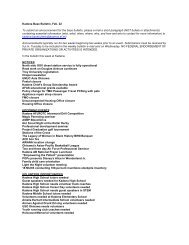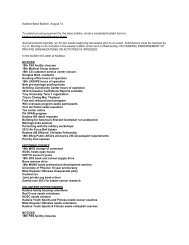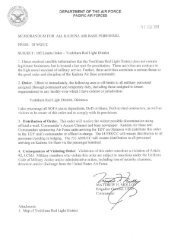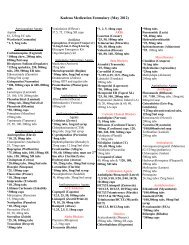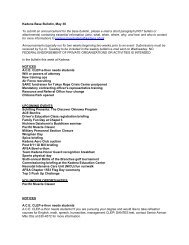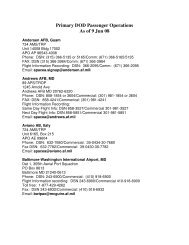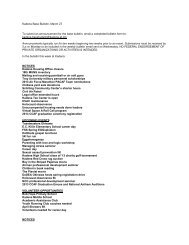JP 3-52, Joint Airspace Control - Defense Technical Information ...
JP 3-52, Joint Airspace Control - Defense Technical Information ...
JP 3-52, Joint Airspace Control - Defense Technical Information ...
You also want an ePaper? Increase the reach of your titles
YUMPU automatically turns print PDFs into web optimized ePapers that Google loves.
Introductionbest suited to balance competing airspace needs against the conflict. Centralizedairspace planning by the ACA facilitates meeting JFC priorities with a fully coordinatedand integrated ACS. Decentralized execution allows subordinate commanders to takethe initiative and increase airspace control effectiveness through real-time airspaceintegration during execution. The ACS and procedures must be flexible enough to permitdecentralized execution to the extent warranted by the operational environment. In thosesituations where there is one theater-wide ACA supporting more than one subordinateJFC (more than one joint operations area, [JOA]), a separate and distinct ACP andairspace control order (ACO) will need to be developed and then approved by therespective subordinate JFC.d. Close liaison and coordination among all airspace users inside and outsidethe JOA is necessary to promote timely and accurate information flow to airspacemanagers. Effective liaison and coordination directly relate to the success of thecampaign or operation.e. <strong>Airspace</strong> control procedures provide flexibility through an effectivecombination of positive and procedural control measures. The control structureencourages close coordination between joint force components to allow rapidconcentration of combat power. As operations progress through different phases, theACS adapts to changing requirements and priorities.(1) Procedural control relies on common procedures, designated airspace,and promulgated instructions by an authorized control agency to deconflict and activateATC areas, ACMs, fire support coordination measures (FSCMs), and air defense controlmeasures. Procedural control activates the airspace by defined volume and time throughstandard ACMs or updates to weapons control status. This serves to deconflict thedefined airspace and aircraft from other airspace users. When appropriatecommunications exist, an authorized airspace control agency can provide proceduralcontrol instructions in real time to increase operational flexibility for airspace users.Procedural control establishes the minimum common criteria and concepts for airspacecontrol. Although potentially not as efficient as positive control, procedural controlprovides effective airspace system capabilities for low density airspace situations and inareas that lack positive control coverage. Procedural control measures need to beuncomplicated and readily accessible to all forces and disseminated in the ACP, ACO,and special instructions (SPINS) of the air tasking order (ATO). Use of these documentsis essential for the planning and integration of manned and unmanned aircraft (UA)operations.(2) Positive control relies on surveillance, accurate identification, andeffective communications between a designated airspace control agency and allairspace users. It is normally conducted by agencies equipped with radar; identification,friend or foe (IFF) interrogators and receivers; beacons; track processing computers;digital data links; and communications equipment. The minimum requirements forsurveillance, identification, and communications equipment will vary in each theater, butare likely to be driven by a combination of military and civil aviation regulations and theI-5



